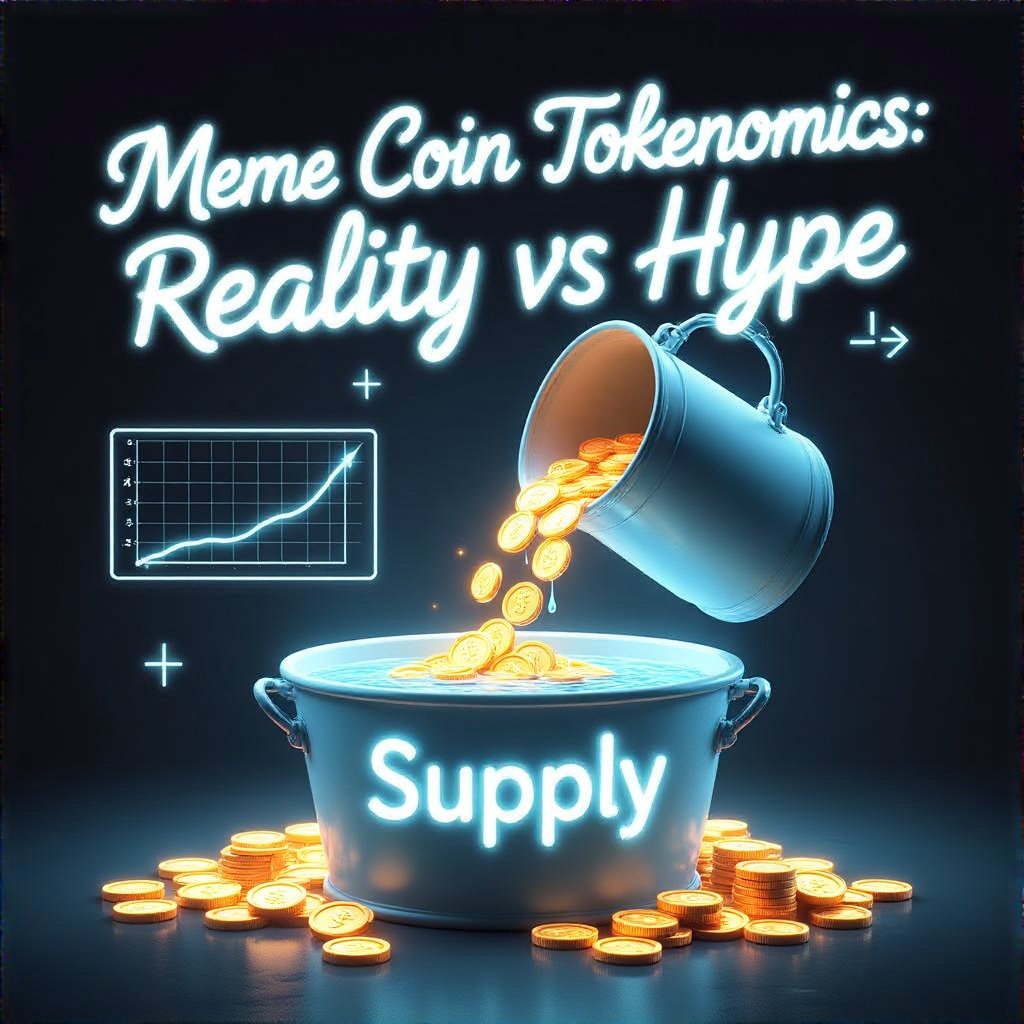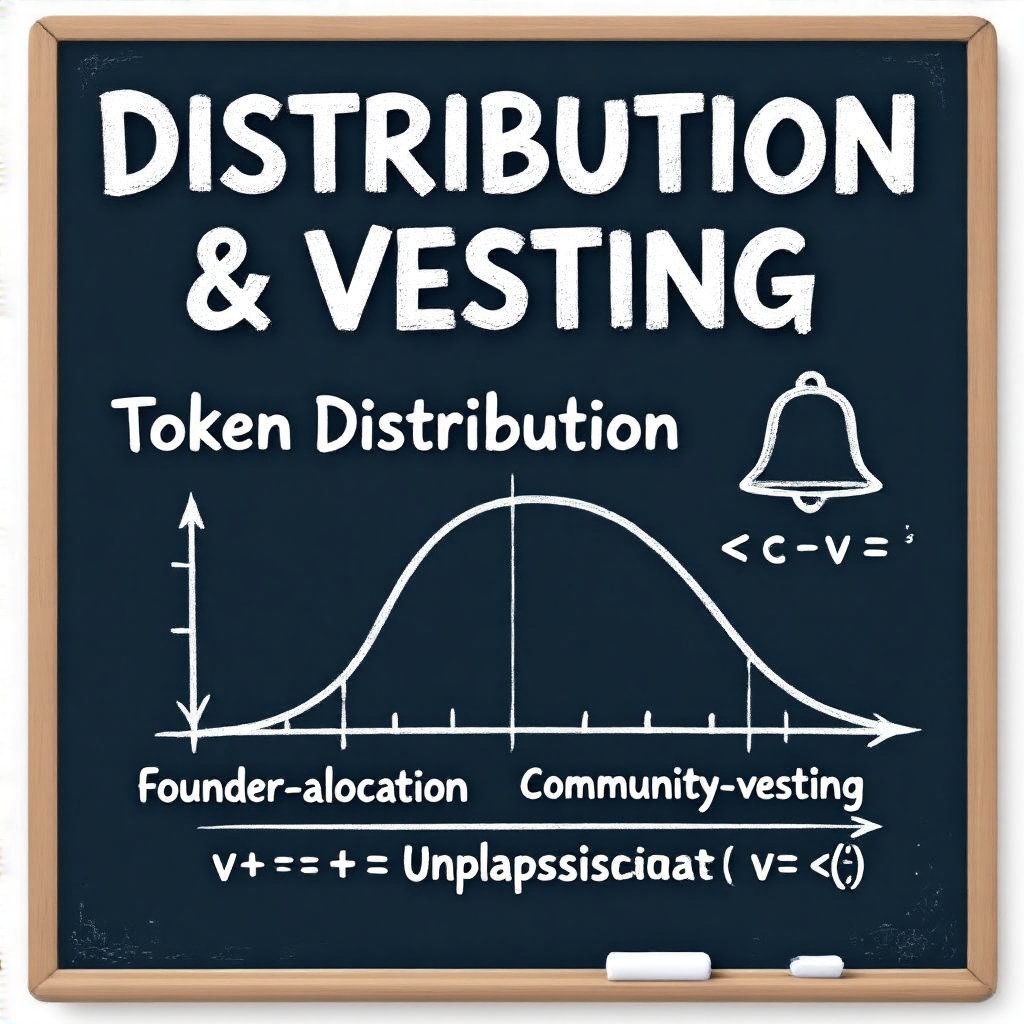Understanding Meme Coin Tokenomics: A Quantitative Guide to Navigate Beyond Hype

In the fast-moving world of meme coins, hype often outpaces fundamentals. This article applies a probabilistic, math-first lens to tokenomics, turning sensational narratives into a framework you can trust. We focus on how distribution, burns, taxes, and incentives interact to shape long-term value, rather than chasing viral headlines.
Foundations of Meme Coin Tokenomics
The core of tokenomics lies in how token distribution is allocated and managed across founders, early investors, and the community. A transparent, vested allocation reduces the risk of sudden dumps and aligns incentives over time. For context, see our discussion on tokenomics best practices, which emphasizes vesting schedules and anti-whale controls. External frameworks such as tokenomics theory also reinforce that a well-structured distribution supports predictable supply dynamics, not just flashy marketing.

Token Distribution and Initial Allocation
How tokens are distributed can inflate or deflate the projection of long-term value. A fair distribution mitigates inflation pressure and reduces the potential for market manipulation. As part of a rigorous model, practitioners model the impact of vesting curves on circulating supply over time, contrasting aggressive allocations with delayed release strategies. This aligns with risk-aware design rather than hype-driven spikes.
Burn Mechanisms and Supply Control
Many meme coins implement burning to decelerate supply growth and create scarcity. Burns can be designed to be predictable, reducing uncertainty in expected value. However, unchecked burns or misaligned timing produce a leaky bucket—the value leaks away without corresponding demand growth. A disciplined burn policy requires clear governance and measurable impact on liquidity depth.
Transaction Taxes and Their Purpose
Taxes on transactions can fund marketing, development, or further burns, creating internal incentives to hold or participate. A zero-tax approach, like Bao Bao Panda, can improve liquidity by removing selling pressure but must be balanced with other design elements to avoid future sustainability risks. Conversely, high taxes may erode trading activity, reducing liquidity depth and widening bid-ask spreads. The probability-weighted value of outcomes improves when taxes align with measurable, transparent utility outcomes.
Incentives: Staking and Rewards
Staking and rewards are the core levers that align participant incentives with network health. When implemented well, staking reduces sell pressure, improves liquidity depth, and signals genuine user commitment. An ideal design yields longer participation windows and measurable improvements in network security and governance participation. For more on how to balance incentive structures with risk, see our linked analysis in the DeFi yield space.

The Math Lens: Sustainability Versus Hype
From a probabilistic perspective, hype-only value resembles a statistically unfavorable bet. Without real utility or competitive moat, demand struggles to outpace supply, producing a leaky token economy. In contrast, zero-tax or disciplined incentive designs can improve the expected value by reducing leakage and focusing on durable use cases. A practical example is Bao Bao Panda's zero-tax model, which suggests that incentive alignment must be complemented by distribution fairness and deliberate burn mechanics.
External perspectives on tokenomics models offer broader context. For foundational concepts, see the Investopedia tokenomics overview. For real-world ecosystem considerations, organizations sometimes reference platform-wide incentive structures (as explored in various DeFi governance analyses). Additionally, readers curious about how excessive marketing affects behavior can explore the broader risk discussions around token launches and long-term value creation.
Case Study: Bao Bao Panda and Its Zero-Tax Model
Bao Bao Panda demonstrates how removing a single leaky mechanism—tax-induced selling—can shift the dynamic. This may improve liquidity and community trust, but it also raises the bar on other design aspects, such as utility, vesting discipline, and burn timing. The takeaway is clear: mathematical alignment of incentives must accompany distribution and supply controls to mitigate hype-driven cycles and move toward sustainable value.

Best Practices and Practical Guidance
To translate hype into durable value, implement a coherent framework that ties tokenomics to measurable outcomes: transparent vesting, capped supply growth, predictable burns, and governance that actually impacts the protocol. Practitioners should regularly review the model against real-world data, adjusting parameters as needed to maintain favorable expected value and liquidity depth. For further reading on governance and ecosystem growth dynamics, consider how token utility, staking, and campaign funding contribute to balanced incentivization, as discussed in our related analyses.
For deeper dives into risk-aware approaches, also explore DeFi yield aggregation strategies and unfulfilled project promises to understand how others assess project trajectories. External reference points such as tokenomics literature and governance best practices provide a broader guardrail for developers and investors alike. See also Ethereum’s model of token utility and network effects for a broader perspective on token-driven ecosystems.
In summary, a disciplined, quantitatively informed approach—combining transparent distribution, prudent supply controls, and well-designed incentives—enables meme coins to move from hype to durable value. The question, always, is not "Is this viral?" but "What does the probabilistic model say about its long-term value?"
Frequently Asked Questions
- What is the primary driver of meme coin value in a tokenomics model? Answer: The balance of supply dynamics, utility, and incentives that reduce leakage while increasing real demand.
- Why are vesting schedules important? Answer: They prevent sudden dumps and align long-term incentives among founders, early investors, and the community.
- How do taxes impact liquidity? Answer: Taxes can fund development or burns but may also deter trading if not carefully calibrated.
